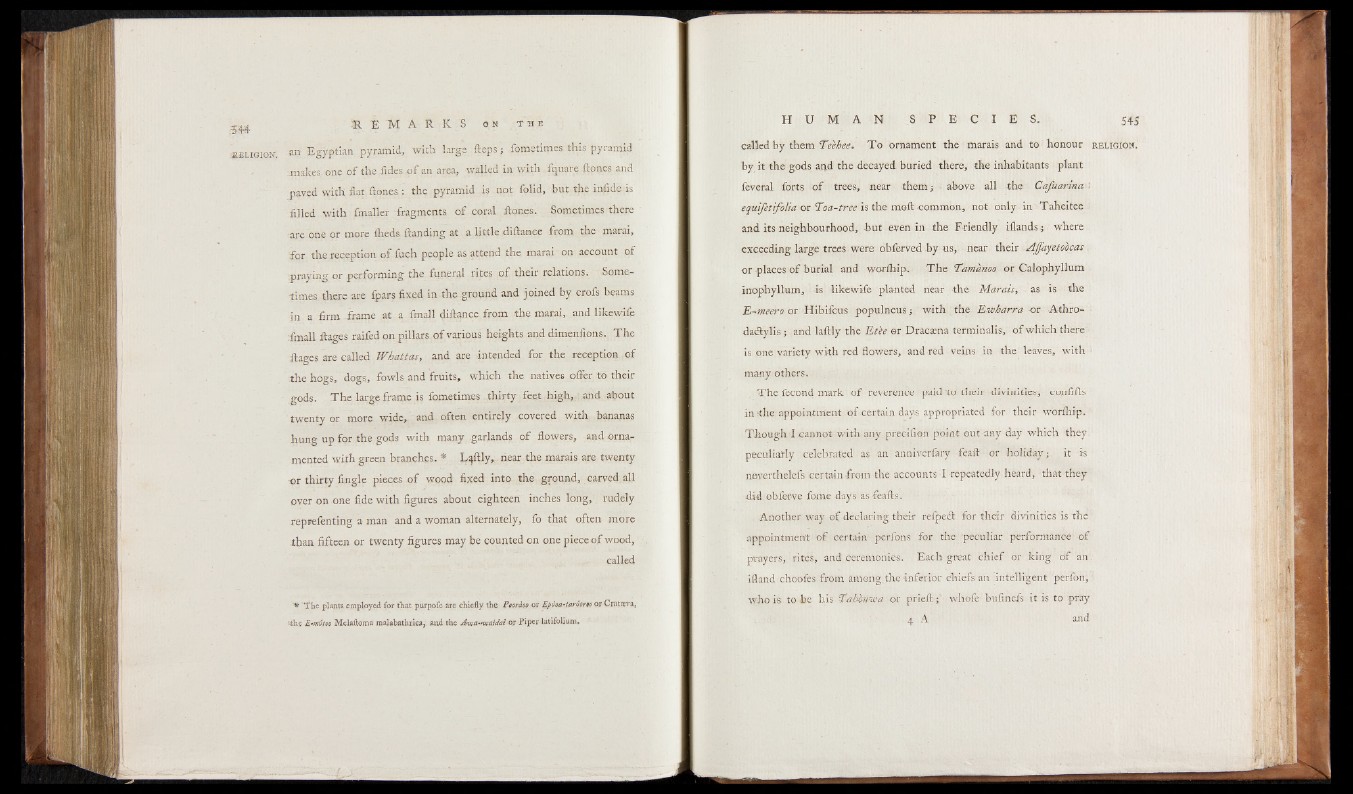
an Egyptian pyramid, with large Heps; fometimes this pyramid
.makes one o f the lides o f an area, walled in with fquare Hones and
paved with flat Hones : the pyramid is not folid, but the infide is
filled with fmaller fragments o f coral Hones. Sometimes there
•are one or more {beds Handing at a little diflance from the marai,
for the reception of fuch people as attend the marai on account of
■ praying or performing the funeral rites o f their relations. Sometimes
there are fpars Axed in the ground and joined by crofs beams
in a Arm frame at a fmall diflance from the marai, :and likewife
imall flages raifed on pillars o f various heights and dimenfions. Th e
flages are called Whattas, and are intended for the reception .of
.the hogs, dogs, fowls and fruits, which the natives offer to their
gods. T h e large frame is fometimes thirty feet high,, and about
twenty or more wide, and often entirely covered with bananas'
hung up for the gods with many garlands o f flowers, and ornamented
with green branches. * L^flly, near the marais are twenty
•or thirty Angle pieces o f wood Axed into the ground, carved, all
over on one Ade with Agures about eighteen inches long,' rudely
reprefenting a man and a woman alternately, fo that often more
than flfteen or twenty Agures may he counted on one piece o f wood,
called
# T h e plants employed for that purpofe are chiefly the Poor&oo or Epdoa-tardorto or Cratteva,
tthe E’motoo Melafloma malabathrica, and the Awa-waidai or Piper latifolium.
called by them Teehee. T o ornament the marais and to honour r e l ig io n .
by it the gods and the decayed buried there, the inhabitants plant
feveral forts o f trees, near them > I above all the Cafuarina '■
equifetifolia or Toa-tree is the mofl common, not only in Taheitee
and its neighbourhood, but even in the Friendly i f lands. where
exceeding large trees were obferved by us, near their AJpzyetoocas
or places o f burial and worlhip. Th e Tamanoo or Calophyllum
inophyllum, is likewife planted near the Marais, . as is the
E-meero or Hibifcus populneusj. with the Ewharra -or Athro-
dadtylis; and lafily the Etie er Dracaena terminalis, o f which there
is one variety with red flowers, and red veins in the leaves, wi th'
many others.
T h e fecond mark o f reverence paid to their divinities, co.nflfls
in tthe appointment of certain days appropriated for their worlhip.
Though I cannot with any preciflon point out any day which they
peculiarly celebrated as an anniverfary feaff or holiday; it is
neverthelefs certain-from the accounts I repeatedly heard, that they
did obferve fome days asfeafts.
Another way o f declaring their refpeft. for their divinities is the •
appointment o f certain perfons for the peculiar performance of
prayers, rites, and ceremonies. Each great chief or king of an
ifland choofes from among, the inferior chiefs an intelligent perfon,
who is to be his Tahctnwa or priefl; whofe buflnefs it is to pray
4 A and